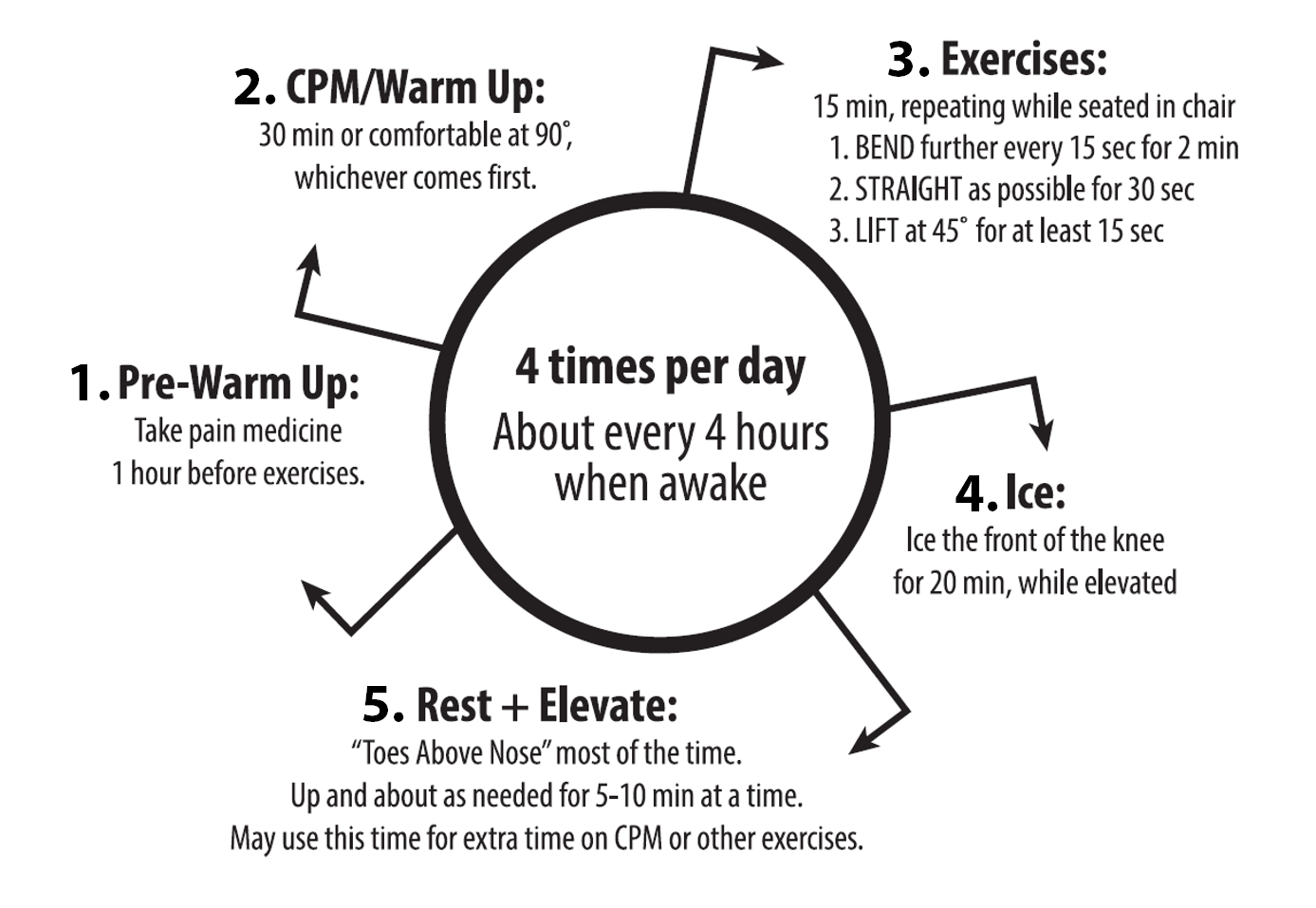Total Knee Replacement is a clinically-proven procedure to treat knee pain and mobility issues when they have not responded to more conservative treatment options. A vital step in making your recovery as rapid and comfortable as possible following a knee replacement surgery is to incorporate an exercise program specifically tailored to your individual needs. Outpatient physical therapy following knee surgery is recommended to ensure you can safely perform the prescribed exercises to best help you recover and return to daily activities.
In addition to outpatient physical therapy sessions, there are some exercises you can perform at home. Below is my preferred protocol for post-operative total knee replacement patients. These activities are especially important in the initial weeks following your knee replacement surgery, but can be incorporated into daily routines to maintain your strength and range of motion indefinitely. When it comes to exercise, compliance and consistency are key to your success.

1. Pre-Warm Up: In the immediate weeks following your total knee surgery, timing exercises with your medication schedule will help with controlling pain/discomfort. Aim to take pain medicine an hour before performing exercises.
2. CPM/Warm Up: CPM (continuous passive motion) machines are devices used to gently flex and extend the knee joint through a pre-set range of motion and are commonly recommended after a total knee replacement. Use the CPM on your knee for 30 minutes or until comfortable at 90 degree angle (whichever comes first) before you begin your exercises.
3. Exercises: While seated in a chair, repeat these exercises in 15 minutes increments, 4 times daily. Your outpatient physical therapy sessions will take priority. If your therapist gives you a list of home exercises, you may substitute them once a day for variety. Remember, the progress you see will depend about 80% upon what you do at home.
- Start with your operated leg in a relaxed position. Bend your knee further every 15 seconds for 2 minutes.
- Straighten your operated leg as much as possible and hold for 30 seconds.
- Lift your knee at a 45 degree angle and hold for at least 15 seconds.
It is important to get up and around for short walks and meals following your total knee replacement. Break activities up into 5-10 minute increments to avoid long periods of standing and walking, with exercises and elevation as your primary focus.
4. Ice: After completing your exercises, ice the front of the knee for 20 minutes, while elevated.
5. Rest + Elevation: Rest is just as important as movement. Whenever resting, lay back and use pillows to elevate the foot above the heart to allow for vascular return and to help prevent blood clots.
Be sure you discuss your progress and exercise plan with your physician or physical therapist to ensure a safe recovery.
